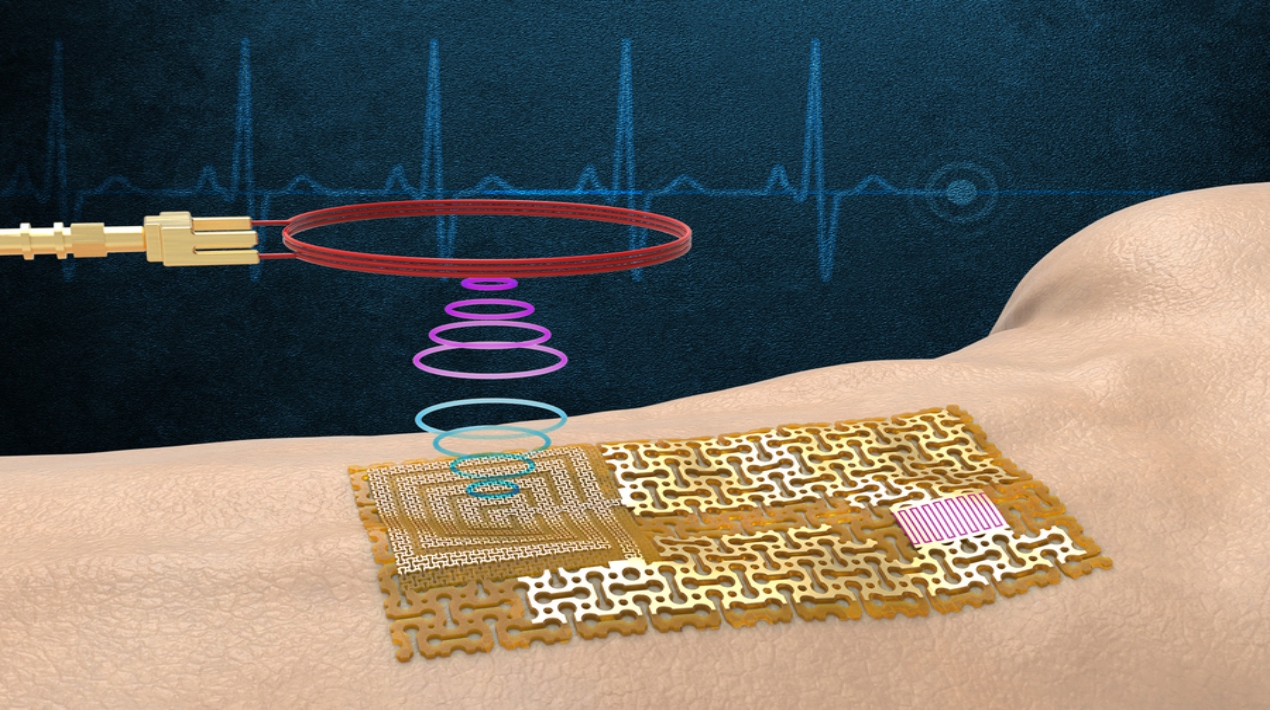
A new class of wearable sensors that interacts wirelessly without the need for onboard chips or batteries has now been developed by American engineers -paving the way for wireless sensors without chips.
“Chips require a lot of power, but our device could make a system very light without having any chips that are power-hungry,” says Jeehwan Kim, principal investigator in the Research Laboratory of Electronics and a corresponding author. To remotely monitor the pulse, sweat, and other biological signals, it could be applied to the body like a bandage and coupled with a wireless reader on the cellphone, he explained.
The team’s sensor is a type of flexible, semiconducting material called “e-skin,” which adapts to the skin like electronic Scotch tape. Gallium nitride, a substance recognised for its piezoelectric capabilities, which allow it to both emit an electrical signal in reaction to mechanical strain and vibrate mechanically in response to an electrical signal, forms the sensor’s core in the way of an ultrathin and high-quality film. Gallium nitride has two-way piezoelectric capabilities that can be used by researchers to use the substance for sensing and wireless communication at the same time.
To enhance any incoming or outgoing electrical signal, the team created pure, single-crystalline samples of gallium nitride. They then combined these samples with a gold conducting layer. They demonstrated that the material’s vibrations produced an electrical signal that could be detected by a nearby receiver and that the gadget was sensitive enough to react to a person’s heartbeat and the salt in their sweat. The system did not require a chip or battery to wirelessly transmit sensor data in this manner.
A piezoelectric material would simultaneously convert the inherent, “resonant” vibration or frequency of a gallium nitride-based sensor bonded to the skin into an electrical signal, the frequency of which could be detected by a wireless receiver. The electrical signal that the sensor automatically provides to the receiver would alter if the skin’s circumstances changed, such as if the heart rate increased.
The scientists created a tiny coating of high-quality, pure gallium nitride, and then combined it with a layer of gold to strengthen the electrical signal to verify their theory. They placed the gold in a dumbbell-like pattern that repeated, giving the usually inflexible metal a lattice-like structure that gave it some flexibility.
Their “sample of electronic skin,” which they refer to as gallium nitride and gold, is only 250 nanometers thick, or approximately 100 times thinner than the breadth of a human hair. They strapped the novel e-skin to the wrists and necks of volunteers and used a small antenna held close by to wirelessly record the sensor’s frequency without touching the sensor itself. The device was able to detect and transmit variations in the surface acoustic waves of gallium nitride on the skin of participants that were related to their heart rates wirelessly.
The team also combined the gadget with a thin sodium-selective ion-sensing membrane, a substance that selectively draws a specific ion. This improvement allowed the system to detect and wirelessly transmit changing sodium levels as a volunteer gripped a heating pad and perspired.
According to the researchers, the findings constitute the initial step toward chip-free wireless sensors. In addition, they believe the current approach might be used with other selective membranes to track additional significant indicators.
















